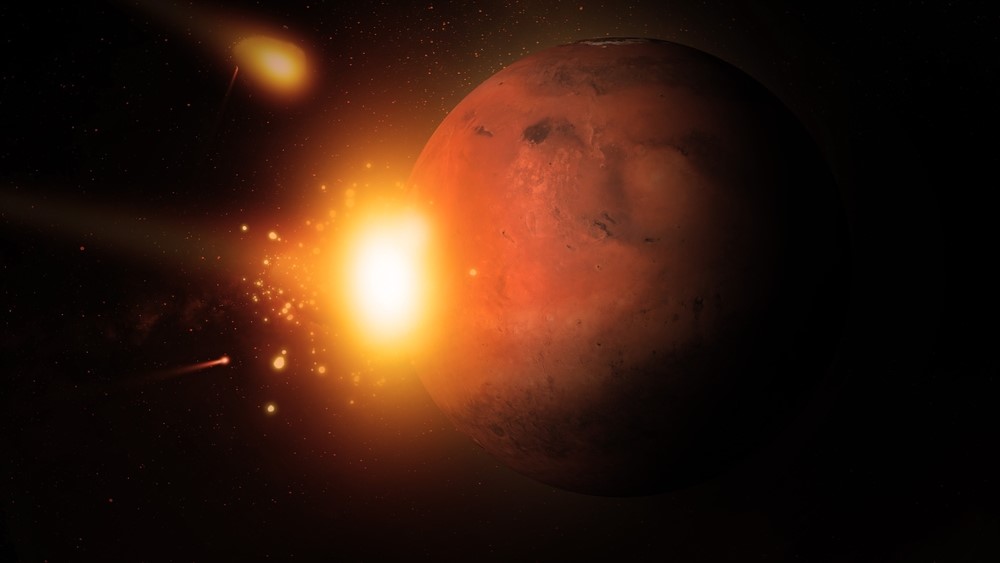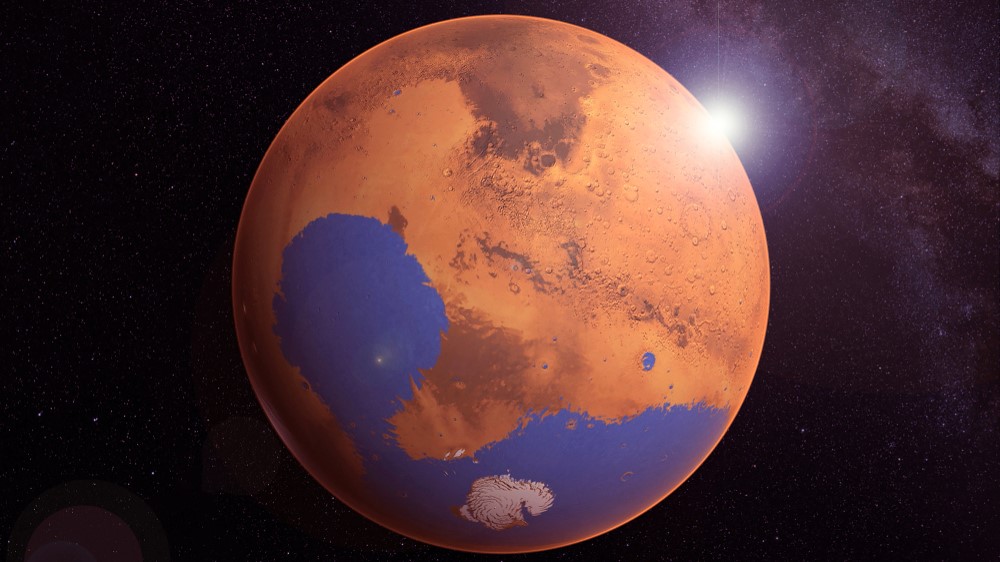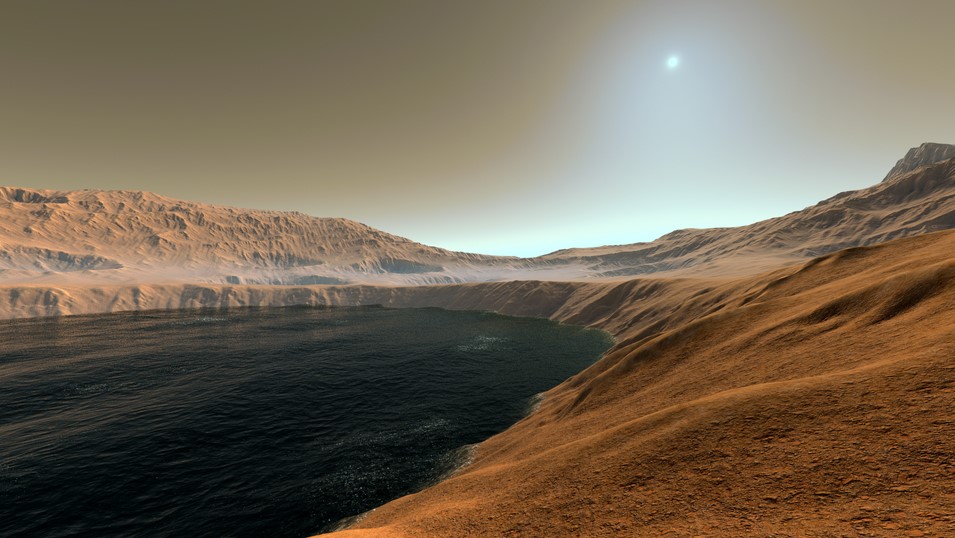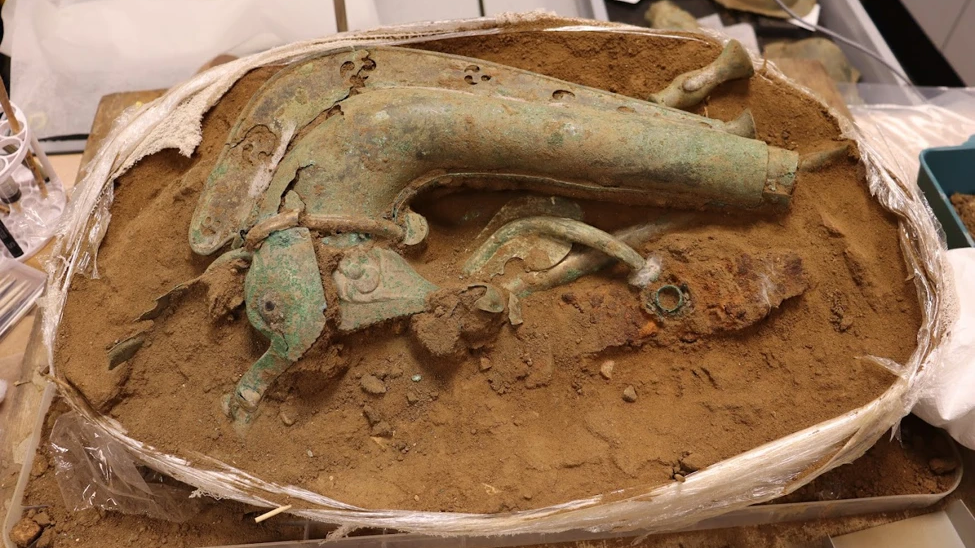Colossal 'planet killer' asteroid sparked mega-tsunami on Mars, and now we know where it landed
Planetary scientists have pinpointed the likely location of a massive asteroid impact that triggered an enormous tsunami on the Red Planet around 3.4 billion years ago.
A newly discovered impact crater on Mars was likely left by an enormous asteroid that slammed into the Red Planet around 3.4 billion years ago and may have triggered an 800-foot-tall "mega-tsunami." The colossal explosion was similar to the asteroid impact on Earth that wiped out the nonavian dinosaurs, a new study shows.
From about 3.5 billion to 3 billion years ago, Mars was covered by vast, shallow oceans. During that time, one of these oceans, which once covered Mars' northern lowlands (Vastitas Borealis), experienced multiple mega-tsunamis when asteroids slammed into the ancient body of water, according to NASA.
Past research has found evidence of at least two massive wave events on the ancient shoreline that once surrounded the long-lost ocean, including large chunks of debris that washed ashore and rock markings that likely carved out as displaced water slowly drained back into the ocean. The first event likely occurred around 3.4 billion years ago, and the second likely emerged around 3 billion years ago as Mars' oceans began to dry up, according to NASA.
Related: Mars' oldest meteorite traced to strange double impact crater
In a new study, published Dec. 1 in the journal Scientific Reports, planetary scientists identified a new impact crater, named Pohl, which is a highly plausible candidate for the first of the mega-tsunamis. Pohl is around 68 miles (110 kilometers) wide and lies around 394 feet (120 meters) beneath the suspected sea level at the time. The massive impact structure is also surrounded by 3.4 billion-year-old rocks.
Based on the size of Pohl, researchers estimate that the asteroid responsible for birthing the crater spanned somewhere between 1.9 to 5.6 miles (3 to 9 km) and released up to 13 million megatons of TNT energy. For context, the most powerful nuclear bomb ever detonated on Earth, the Tsar bomba, released around 50 megatons of TNT energy.
The study team then used computer simulations to recreate the massive wave that would have been generated by this colossal impact. They found that the waves could have reached up to 820 feet (250 m) tall and traveled around 932 miles (1,500 km) away from the crater. These waves would have been large enough to leave behind the geological evidence already uncovered by past researchers, the team said in a statement.
Get the world’s most fascinating discoveries delivered straight to your inbox.
Related: Giant reservoir of 'hidden water' discovered on Mars
This gargantuan impact structure has some key similarities with the Chicxulub crate, which was left by an asteroid impact that triggered a mass extinction event around 66 million years ago and wiped out the nonavian dinosaurs, the researchers wrote.
The Chicxulub crater, located on Mexico's Yucatán Peninsula, is significantly larger than Pohl, spanning around 112 miles (180 km), and was birthed by a larger asteroid that was around 7.5 miles (12 km) across. The Chicxulub asteroid also landed on top of an ancient ocean on Earth that was around 656 feet (200 m) deep at the time. In October, a pair of unrelated studies found that the Chicxulub impact also triggered a mega-tsunami with mile-high waves and triggered a mega-earthquake that rocked the planet for months.
This is not the first time that researchers have identified a potential impact crater for Martian mega-tsunamis. In 2019, a separate team of researchers proposed that the Lomonosov crater, which measures around 90 miles (145 km) across, was left by an impactor that could have sparked a mega-tsunami.
However, the Lomonosov crater has not been precisely dated, so it is unclear which mega-tsunami the impactor could have kickstarted or if the impact happened when oceans were present at all.

Harry is a U.K.-based senior staff writer at Live Science. He studied marine biology at the University of Exeter before training to become a journalist. He covers a wide range of topics including space exploration, planetary science, space weather, climate change, animal behavior and paleontology. His recent work on the solar maximum won "best space submission" at the 2024 Aerospace Media Awards and was shortlisted in the "top scoop" category at the NCTJ Awards for Excellence in 2023. He also writes Live Science's weekly Earth from space series.





